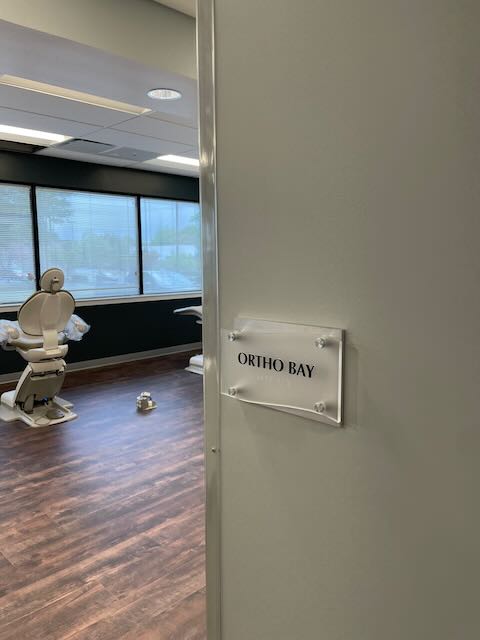Wayfinding Signs: Guiding You Through Spaces with Ease
Have you ever found yourself lost in a large building or trying to navigate a sprawling city without any clear direction? Wayfinding signs are the unsung heroes that guide us through these complex spaces, helping us reach our destinations with ease. In this article, we'll delve into the world of wayfinding signs, exploring their importance, evolution, types, and the principles that make them effective.

What Are Wayfinding Signs?
Wayfinding signs are tools used to provide direction and information to help people navigate through physical spaces. They serve the primary purpose of orienting people and ensuring they can find their way from one point to another efficiently. Think of them as the silent guides that tell you where you are and how to get to where you need to be.

History of Wayfinding Signs
Wayfinding signs have a rich history that dates back to ancient civilizations. Early examples include milestones along Roman roads and medieval signposts in European towns. Over time, these signs have evolved from simple carvings to sophisticated digital displays, reflecting advancements in technology and design.
Types of Wayfinding Signs
- Directional Signs: These signs point the way to different locations, often using arrows and clear, concise wording.
- Informational Signs: These provide essential information about a location, such as maps, directories, and hours of operation.
- Identification Signs: These help users identify specific locations like restrooms, exits, and department names.
- Regulatory Signs: These convey rules and regulations, such as no smoking areas and safety instructions.
Design Principles for Wayfinding Signs
Creating effective wayfinding signs involves several key design principles:
- Clarity and Simplicity: The information must be easy to read and understand at a glance.
- Consistency: Uniform design elements across all signs help create a cohesive system.
- Visibility: Signs should be placed at eye level and use colors and contrasts that stand out.
- Placement: Strategic positioning ensures signs are seen at decision points, such as intersections and entrances.
Materials Used in Wayfinding Signs
Wayfinding signs can be made from various materials, each suited to different environments:
- Metals: Durable and weather-resistant, ideal for outdoor use.
- Plastics: Versatile and cost-effective, commonly used indoors.
- Wood: Offers a natural aesthetic, often used in parks and rustic settings.
- Digital Displays: Provide dynamic and interactive information, suitable for modern, tech-savvy environments.
Technological Advancements in Wayfinding
The advent of technology has revolutionized wayfinding signs:
- Digital and Interactive Signs: These signs can update in real-time and offer interactive features.
- QR Codes and Mobile Integration: Users can scan codes with their phones for more detailed information.
- Augmented Reality (AR): Enhances the navigation experience by overlaying digital information onto the real world through smartphones or AR glasses.
Wayfinding in Different Environments
Wayfinding signs are tailored to their specific environments to address unique navigational challenges:
- Urban Areas: Help pedestrians and drivers navigate city streets and public transportation systems.
- Hospitals: Guide patients and visitors through complex healthcare facilities.
- Airports: Assist travelers in finding check-in counters, gates, and baggage claim areas.
- Shopping Malls: Direct shoppers to stores, food courts, and amenities.
- Educational Institutions: Help students and visitors locate classrooms, offices, and facilities.
The Psychology of Wayfinding
Understanding how people perceive and process spatial information is crucial in designing effective wayfinding systems:
- Cognitive Mapping: Refers to the mental process of creating a spatial map of an environment.
- User Behavior and Experience: Insights into how different people navigate spaces can inform better sign design and placement.
Wayfinding and Accessibility
Ensuring wayfinding systems are accessible to all users, including those with disabilities, is essential:
- ADA Compliance: Signs must meet the standards set by the Americans with Disabilities Act, including braille and tactile elements.
- Inclusive Design: Considerations for color contrast, font size, and easy-to-understand symbols help make signs usable for everyone.
Case Studies of Effective Wayfinding Systems
Examining successful implementations can provide valuable insights:
- Successful Implementations: Highlight examples from airports, hospitals, and urban centers where wayfinding systems have significantly improved navigation.
- Lessons Learned: Discuss the challenges faced and how they were overcome, offering best practices for future projects.
Challenges in Wayfinding Signage
Despite their importance, wayfinding signs come with their own set of challenges:
- Common Issues: Include poor visibility, inconsistent design, and outdated information.
- Solutions and Best Practices: Emphasize regular maintenance, user feedback, and adopting new technologies to keep systems effective.
The Future of Wayfinding
The field of wayfinding is continuously evolving with new trends and innovations:
- Emerging Trends: Include the increased use of digital signage and integration with smart city initiatives.
- Innovations on the Horizon: Look at potential future technologies like AI-driven navigation and personalized wayfinding experiences.
Conclusion
Wayfinding signs play a crucial role in our daily lives, guiding us through complex environments with ease. By understanding their history, types, design principles, and the latest technological advancements, we can appreciate their importance and anticipate future innovations. Whether you're navigating a bustling city, a sprawling airport, or a large hospital, these signs ensure you reach your destination without hassle.
What's Your Reaction?










![Wireless Connectivity Software Market Size, Share | Statistics [2032]](https://handyclassified.com/uploads/images/202404/image_100x75_661f3be896033.jpg)




